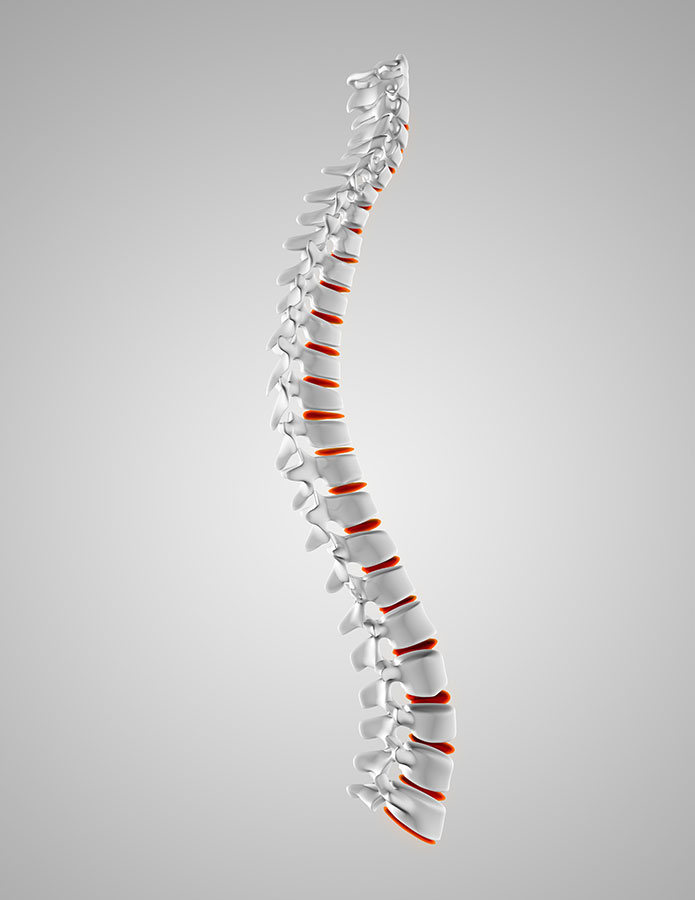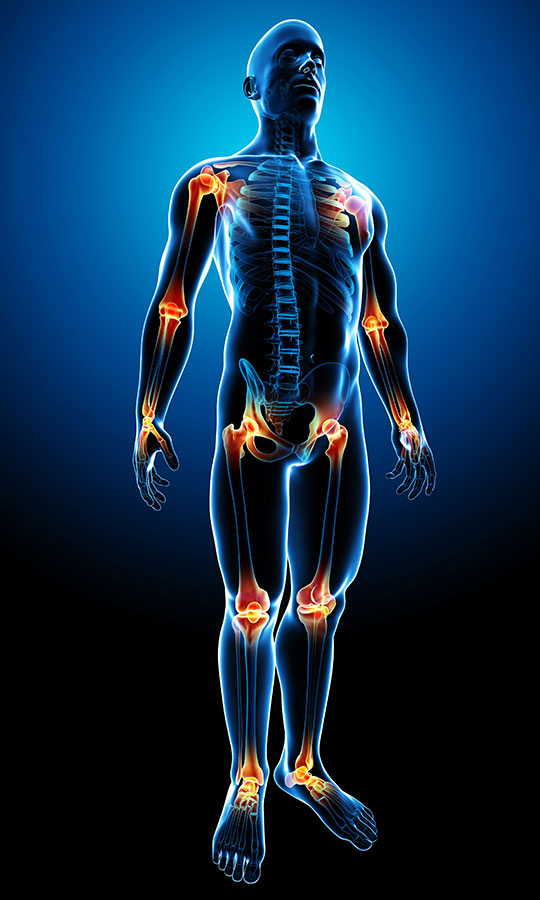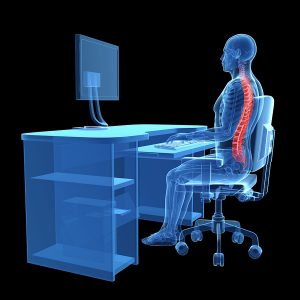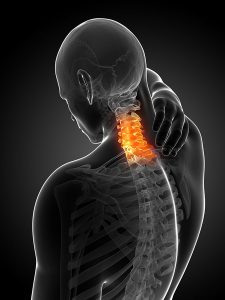If you’ve ever seen a video of joint manipulation, you’re probably a bit nervous about the thought of having your joints “clicked” or “cracked”. Not to worry, though, in most cases the videos on social media are specifically chosen to shock and awe.
Joint manipulation is a therapeutic technique involving the skilled application of force to a joint. In practice, we use these techniques to improve range of motion of joint function. There is significant overlap with the joint mobilization techniques commonly used by physiotherapists. If you think of joint mobilization as a range, like different shades of blue, manipulation would be the dark, navy blue whereas grade 1 mobilization starts at pale, baby blue. The key is always applying the appropriate tool, or “shade of blue”, to the problem. Spinal manipulation is definitely not always the answer, but it is a useful tool when necessary.
What exactly is joint manipulation?
Joint manipulation is a hands-on, or manual, technique used to improve range of motion, treat joint stiffness or restricted movement. It is most commonly used by medical professionals working in musculoskeletal health. In other words, therapists who treat nerve-, joint- and bone injuries or pain. Adjustment is another term sometimes used to refer to spinal- or peripheral manipulation.
Why physiotherapists use joint manipulation techniques
Along with joint mobilization and various other treatment modalities, physiotherapists use joint manipulation to improve joint mobility, alleviate pain, and enhance overall function. These techniques are not always indicated or necessary during treatment. Sometimes a gentler approach is more effective, but in other cases joint manipulation is the treatment choice that will get the results you’re looking for.
Benefits of joint manipulation treatment
- Pain relief
- Restores joint mobility
- Stimulates blood flow
- Breaks down scar tissue and adhesions
- Reduces soft tissue tension
“A safe and effective technique when applied by an expert.”
The Technique
Joint manipulation is the application of a controlled force to a joint. The application is usually a quick and specific thrust to the targeted joint. Your physiotherapist will never apply a general manipulation just to see what “clicks”. Before the technique is applied, we identify restrictions in joint movement. This allows us to accurately mobilize the joint beyond its normal physiological range.
Different types of application
Spinal Manipulation: The application of a controlled force to the spine.
Peripheral Joint Manipulation: Uses the same principles as spinal manipulation, but applied to joint in the extremities i.e. shoulders, elbows, ankles etc.
High-Velocity Low-Amplitude (HVLA) Manipulation: This is the joint manipulation technique most commonly used by physiotherapists. A quick, controlled thrust is applied into a specific joint’s restricted range.
Low-Force Joint Mobilization: Gentle, rhythmic movements are applied to joints to improve mobility without the quick thrust associated with HVLA.
Muscle Energy Technique (MET): This technique uses different types of muscle contractions to treat joint dysfunction.
Active Release Technique (ART): Manipulation is combined with active movements to treat soft tissue conditions.
Mulligan Concept: A combination of passive mobilization, by the therapist, and active movement by the patient is used to improve joint mobility and function.
Anatomical Changes
Improved Range of Motion
Joint manipulation aims to improve or restore movement of a joint, allowing for a greater range of motion.
Relief from Joint Stiffness
These techniques are also used to alleviate joint stiffness by targeting specific restrictions in joint mobility.
Joint Lubrication
The applied pressure during mobilization or manipulation influences the distribution of synovial fluid within the joint, improving lubrication and reducing friction.
Normalization of Joint Mechanics
The application of controlled force during manipulation aims to restore proper joint mechanics and reduce abnormal stress on surrounding structures.
Muscle Relaxation
Manipulation stimulates mechanoreceptors in the treated joints, providing feedback to your nervous system. This results in improved proprioception which promoted joint stability and motor control.
Physiological changes
Relaxation
Spinal- and peripheral mobilization or manipulation stimulates the parasympathetic nervous system. This part of your nervous system is also responsible for “rest and digest” state. Therefore, activating the parasympathetic system facilitates relaxation.
Enhanced Joint Nutrition
The manipulation techniques enhance blood flow to the joint and surrounding tissues, improving the delivery of oxygen and nutrients to spinal and peripheral joints. Improved circulation also supports the removal of waste products.
Modulation of Pain Perception
Joint manipulation influences neural receptors and pathways, leading to a reduction in pain perception. By addressing movement restrictions and promoting proper joint function, joint manipulation also contributes to pain relief associated with joint stiffness and muscle spasm.
Neuromuscular Effects
These techniques also impact your nervous system, influencing muscle tightness and function.
Facilitation of Tissue Healing
By promoting blood flow and nutrient exchange, joint manipulation may contribute to the healing process of soft tissues, such as ligaments and tendons.
What will I feel when joint manipulation is applied?
If you’re still worried about joint manipulation, you can rest assured that you are in good hands. Joint manipulation does not involve the wild, scary stunts you’ve seen or heard about.
When joint manipulation is applied, the first step will be to assess the joint mobility or area of restriction. During this step, you will feel pressure or tension as your physiotherapist moves the joint through the available range of motion.
During the manipulation itself, you could feel brief discomfort, pressure or tension. In some cases, there might be a popping or cracking sound, but the presence of a pop or crack is not an indication of whether the manipulation was effective or not.
After the joint manipulation, you may feel slight discomfort, but mostly the result will be reduced muscle tension and improved mobility.
How long does a joint manipulation take?
Physiotherapists use a variety of techniques and modalities to treat your specific problem. This may include joint manipulation, but we will never rely on a single technique as a full treatment session. How long joint manipulation takes will depend on the area of restriction and your associated symptoms. If you have severe pain, we will use other treatment modalities like myofascial release, dry needling or laser first to relieve some tension in the area. A single joint manipulation takes a couple of seconds, but assessment and preparation are crucial to ensure effectiveness.
How many times should joint manipulation techniques be performed?
You should feel the results of joint manipulation immediately, as the indication for the technique is a restriction of joint mobility. If the technique is performed correctly, the mobility will improve directly after application.
There is always an underlying cause for the restriction. When the cause isn’t addressed, you will need joint manipulation on a regular basis. But don’t lose hope – this is exactly where physiotherapy makes all the difference. A proper, individualized treatment plan based on a thorough assessment takes you to a place where you don’t have to plan your schedule around regular adjustments or manipulation.
Your physiotherapist will discuss a treatment plan with you, give you an idea of how long it will take for your condition to improve and how often treatment is needed. In some cases you’ll need 6-8 sessions over a period of eight weeks, whereas others improve within 3-4 sessions in less than a month. For most joint problems, we see you twice during the first week, once a week for the next two weeks and then once every second week over the next month.
What can I do at home to ensure joint- or spine manipulation is effective?
- Do the exercises prescribed by your physiotherapist.
- Avoid movements or positions that make your pain worse, but still stay active within limits of your pain.
- Apply ice or heat, as advised by your medical practitioner.
- Don’t stay in the same position for too long.
- Pay attention to the behavior of your symptoms after treatment and report back to your physiotherapist at your next session. How your body responds to treatment gives your medical practitioner valuable information on how to progress your treatment plan.
Cost of joint- and spine manipulation
There are specific medical aid rates for joint manipulation, but these techniques will never be used in isolation. Any injury or painful condition will have multiple factors, so your physiotherapist will apply the appropriate treatment for your unique problem.
Medical Aid Code – 401 and 402
The treatment codes 401 or 402 apply when joint mobilization or manipulation is used during treatment. Most good medical aids offer re-imbursement for joint manipulation.
Does it make a difference to have an experienced physiotherapist apply joint mobilization and manipulation?
Physiotherapists are expertly trained in anatomy, physiology and biomechanics, ensuring that joint techniques can be performed safely and effectively.
Joint manipulation requires specific training, so not all physiotherapists apply these techniques during treatment. And even when a medical practitioner is trained in specialized joint treatment, an expert will diagnose the underlying cause of your symptoms and determine whether joint mobilization of -manipulation is appropriate for your problem. They can also identify contraindications and possible risk factors.
Another core skill of physiotherapists is monitoring your progress over time, adjusting the treatment plan as needed and ensuring long term improvements.





